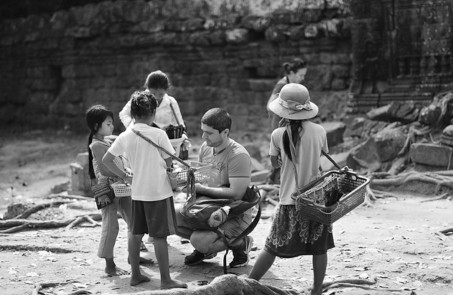
The causeway's balustrades are in the form of nagas, or seven-headed serpents, with guardian stone lions next to them. Traditional belief has it that this is a rainbow bridge that links the world of humans with that of the gods.
One thing to be keenly aware of before you visit Angkor Wat is that the view you get of will differ markedly depending on what time of day you are there; the views of sunrise and those of sunset are world's apart. At dawn, about 7 am, many gather at a pond near the causeway to enjoy the temple's pretty silhouette and reflection.
Outside the central temple complex are the well-known intricate bas-reliefs about historical events and Hindu mythology.
One 49-meter-long panel depicts 88 gods and 92 asuras pulling the body of a giant naga to churn the Sea of Milk for 1,000 years to produce amrita, the elixir of immortality.
The gods keep their promise to give half of the amrita to asuras, but the latter try to steal it.
You can easily see that the churning created dancing apsaras and various marine life such as fishes, crocodiles and turtles.
Another place that offers fantastic narrative bas-reliefs is the Bayon Temple at Angkor Thom. It shows historical battles on water and on land, and the daily lives of people in the early 13th century. The Khmer soldiers have short hair and are often armed with shields and spears, and their commanders ride elephants. A group of their allies, Chinese soldiers, have beards and topknots.


















































